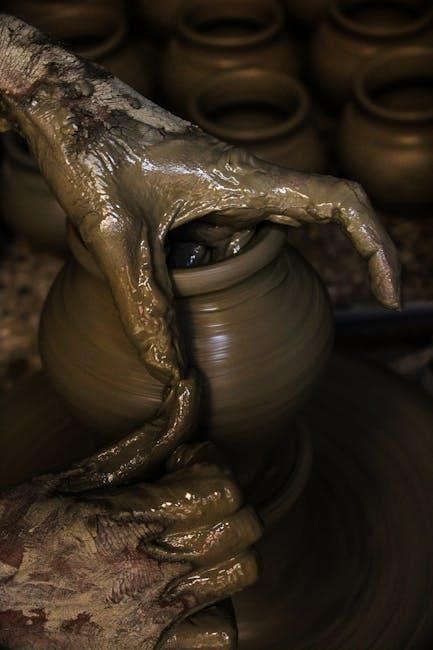elder care agreement form 85 pdf
The Elder Care Agreement Form 85 PDF is a legal document designed to establish a formal caregiving arrangement between an older adult and their caregiver. It ensures clarity, protects both parties, and outlines responsibilities, payment terms, and duration, providing a structured framework for elder care services while preventing potential disputes.
1.1 Definition and Purpose of the Form
The Elder Care Agreement Form 85 PDF is a legal document that outlines the terms of a caregiving arrangement between an elder and their caregiver. Its primary purpose is to establish a clear, mutually understood contract that defines the responsibilities, compensation, and expectations for both parties. This form ensures that the elder’s needs are met while protecting the caregiver’s rights and interests. It serves as a preventive measure against disputes by providing a structured framework for the caregiving relationship, making it essential for families seeking to formalize care arrangements effectively and respectfully.
1.2 Importance of Having a Written Caregiver Agreement
A written caregiver agreement is vital for ensuring clarity and protection for both the elder and the caregiver. It establishes clear expectations, responsibilities, and boundaries, reducing the risk of misunderstandings or disputes. This document provides legal protection by outlining payment terms, caregiving duties, and the duration of the arrangement. It also ensures the elder’s needs are met while safeguarding the caregiver’s rights. Having a formal agreement fosters trust and accountability, making it an essential tool for families and caregivers seeking to navigate the complexities of elder care with confidence and peace of mind.

Key Components of the Elder Care Agreement Form 85
The Elder Care Agreement Form 85 includes essential details such as parties involved, caregiving responsibilities, payment terms, and termination clauses. It serves as a clear, legally binding contract.
2.1 Parties Involved in the Agreement
The elder care agreement form 85 PDF involves two primary parties: the elderly individual requiring care and the caregiver, often a family member or hired professional. The caregiver agrees to provide specific services, while the elder or their legal representative consents to the arrangement. Both parties must be clearly identified with their names, roles, and contact information. This section ensures accountability and mutual understanding. Witnesses may also be included to validate the agreement. Clarity in defining the parties involved is crucial for the document’s legal validity and enforceability, protecting both the elder and the caregiver’s interests.
2.2 Scope of Caregiving Services
The scope of caregiving services outlines the specific duties and responsibilities the caregiver will perform. This includes personal care like bathing, dressing, and grooming, as well as household responsibilities such as meal preparation and cleaning. Medical needs, such as administering medication or monitoring health conditions, may also be detailed. The agreement should specify the level of care required, whether it’s full-time, part-time, or occasional. This section ensures both parties have a clear understanding of the caregiver’s role and responsibilities, aligning expectations and reducing potential misunderstandings. Customization allows the agreement to fit the elder’s unique needs and circumstances.
2.3 Compensation and Payment Terms
The compensation and payment terms section details how the caregiver will be paid for their services. This includes the hourly rate, flat fee, or other agreed-upon payment structures. It specifies payment frequency, such as weekly, bi-weekly, or monthly, and the preferred payment method. The agreement may also address reimbursement for expenses related to caregiving, like transportation or medical supplies. Tax implications, such as reporting income or deducting expenses, should be considered. Clear payment terms ensure transparency and fairness, preventing financial disputes. Both parties should agree on the terms to maintain a smooth and professional relationship. Legal or financial advice can help tailor this section.
2.4 Duration and Termination Clause
The duration and termination clause outlines the timeframe for the caregiving arrangement and the conditions under which the agreement can be ended. This section specifies the start and end dates, whether the agreement is indefinite or fixed-term, and the notice period required for termination by either party. It may also include circumstances, such as a caregiver’s inability to continue or the elder’s relocation, that warrant termination. This clause ensures both parties understand their obligations and the process for ending the agreement, preventing misunderstandings and protecting everyone involved. Clear terms promote fairness and allow for smooth transitions if the arrangement ends.

How to Create and Customize the Elder Care Agreement
Creating and customizing the Elder Care Agreement involves defining caregiving responsibilities, payment terms, and legal consultations to ensure clarity and compliance with applicable laws, protecting both parties effectively.
3.1 Steps to Draft the Agreement
To draft the Elder Care Agreement, start by identifying the parties involved and their roles. Clearly outline the scope of caregiving services, including specific duties and responsibilities. Define compensation and payment terms, ensuring clarity on amounts, frequency, and methods. Establish the agreement’s duration and termination clauses, specifying conditions for ending the contract. Include legal consultation recommendations to ensure compliance and fairness. Finally, allow for flexibility to modify the agreement as care needs evolve, ensuring it remains relevant and effective over time.
3.2 Legal Considerations and Consultations
When drafting the Elder Care Agreement, it is crucial to address legal considerations to ensure compliance with local laws and regulations. Consult with an attorney specializing in elder law to review the document for enforceability and fairness. The agreement must comply with labor laws, tax implications, and elder care regulations. Legal review ensures that both parties’ rights are protected and that the terms are clear and binding. This step is essential to avoid future disputes and ensure the agreement meets all legal requirements, providing peace of mind for both the elder and the caregiver.
3.3 Ensuring Clarity and Specificity
Clarity and specificity are vital when creating an Elder Care Agreement to avoid misunderstandings. Clearly outline the caregiver’s responsibilities, payment terms, and the elder’s needs. Use straightforward language and avoid vague terms. Specify the scope of services, such as daily care tasks, medical support, and household responsibilities. Include details about payment methods, frequencies, and any deductions. Define the agreement’s duration and termination conditions explicitly. Ensure both parties fully understand the document by reviewing it together. A clear, detailed agreement fosters trust and ensures the elder receives appropriate care while protecting the caregiver’s rights, making the arrangement fair and effective for all involved.

Benefits of Using the Elder Care Agreement Form 85
The Elder Care Agreement Form 85 provides legal protection, prevents disputes, and ensures clarity in caregiving arrangements. It offers tax benefits and peace of mind for both parties involved.
4.1 Protection for Both the Elder and Caregiver
The Elder Care Agreement Form 85 ensures legal protection for both the elder and caregiver. It clearly outlines responsibilities, payment terms, and expectations, reducing the risk of misunderstandings. For the elder, it guarantees that their care needs are met and respected. For the caregiver, it provides clarity on their role and compensation, protecting them from disputes over unpaid labor or responsibilities. This mutual protection fosters trust and peace of mind, ensuring a fair and structured caregiving arrangement that honors the rights and needs of both parties involved in the agreement.
4.2 Avoiding Disputes and Misunderstandings
The Elder Care Agreement Form 85 PDF plays a crucial role in preventing disputes and misunderstandings by providing a clear and structured framework for the caregiving arrangement. By outlining specific responsibilities, compensation terms, and expectations in detail, the form ensures that both the elder and the caregiver have a shared understanding of their roles and obligations. This clarity minimizes ambiguities that could lead to conflicts, fostering a harmonious and cooperative relationship. The form also addresses potential issues before they arise, ensuring that both parties are aligned and reducing the likelihood of future disagreements effectively.
4.3 Tax and Financial Implications
The Elder Care Agreement Form 85 PDF helps clarify the tax and financial implications of caregiving arrangements. It outlines compensation terms, ensuring the caregiver understands their payment structure and potential tax obligations. The form also specifies how expenses, such as medical care or household costs, will be allocated and reimbursed. By documenting these details, the agreement prevents financial disputes and ensures compliance with tax regulations. Additionally, it provides a clear record of transactions, which can be essential for tax filings or audits. This transparency protects both the elder and caregiver, ensuring financial matters are handled fairly and legally.

How to Fill Out the Elder Care Agreement Form 85
To complete the Elder Care Agreement Form 85, enter the elder’s and caregiver’s personal details, describe the caregiving services, specify payment terms, and outline the agreement’s duration. Both parties must sign and date the document, with witnesses if required, to ensure its validity and enforceability. This step-by-step process ensures all necessary information is included for a clear and legally binding arrangement.
5.1 Required Information and Documentation
The Elder Care Agreement Form 85 requires detailed personal information of both the elder and caregiver, including names, addresses, and contact details. Clearly describe the scope of caregiving services, such as daily living assistance or medical support. Specify payment terms, including rates, frequency, and methods. Outline the agreement’s duration and any conditions for renewal or termination. Attach supporting documents, such as medical records or power of attorney, if applicable. Ensure all details are accurate and comprehensive to avoid disputes and ensure the agreement is legally binding and enforceable. Proper documentation is essential for clarity and protection of both parties’ rights.
5.2 Signatures and Witnesses
The Elder Care Agreement Form 85 must be signed by both the elder and the caregiver to confirm mutual agreement. Witnesses, ideally two disinterested parties, should also sign to validate the document’s authenticity. Include printed names and dates alongside signatures for clarity. A notary public may be required to notarize the agreement, adding an extra layer of legal credibility. Proper execution ensures the document is legally binding and protects both parties’ interests. Signatures and witnesses are critical to avoid disputes and demonstrate mutual consent to the agreed terms and conditions outlined in the agreement.
5.3 Storing and Sharing the Document
After completing the Elder Care Agreement Form 85 PDF, store it securely to ensure easy access and protect sensitive information. Keep physical copies in a safe place, such as a filing cabinet or with a trusted family member. Digitally, save the document using secure platforms like cloud storage or encrypted files. Share copies with relevant parties, such as legal advisors, healthcare providers, or other family members, to ensure transparency. Regularly review and update the document as needed, maintaining clear communication about its location and contents. Proper storage and sharing ensure the agreement remains accessible and legally valid when required.

Common Mistakes to Avoid When Using the Form
Avoiding common mistakes is crucial for the agreement’s effectiveness. Ensure clear terms, adequate legal oversight, and detailed service descriptions to prevent misunderstandings and protect all parties’ interests.
6.1 Omissions in Caregiving Responsibilities
Omissions in caregiving responsibilities can lead to confusion and disputes. Clearly outline tasks like daily care, medical needs, and household duties. Avoid vague terms that may cause misunderstandings. Ensure the agreement details specific caregiving expectations to prevent oversight. Consulting a legal expert can help identify and address potential gaps. Without clear definitions, both parties may face issues. Regular reviews of the agreement can help update responsibilities as needs change. Specificity ensures the elder receives adequate care and the caregiver understands their role, preventing future conflicts and ensuring compliance with legal standards.
6.2 Unclear Payment Terms
Unclear payment terms can lead to financial disputes between caregivers and elders. Specify payment schedules, methods, and amounts to avoid misunderstandings. Include details like hourly rates or flat fees, and outline payment milestones. Clearly define how expenses will be reimbursed and if non-monetary compensation, such as housing, is provided. Avoid vague language that leaves room for interpretation. Regularly review and update payment terms as needs or circumstances change. Ensuring transparency in financial arrangements protects both parties and maintains trust. Legal advice can help draft precise terms, preventing potential conflicts and ensuring compliance with legal and financial standards.
6.3 Lack of Legal Review
Lack of legal review is a common mistake that can lead to invalid or unenforceable agreements. Consulting with an attorney ensures the document complies with local laws and protects both parties. Without legal oversight, the agreement may lack necessary clauses, leaving room for disputes. Elders and caregivers may face legal vulnerabilities if terms are not clearly defined or if rights are not adequately protected. Legal review helps address potential issues, such as compensation disputes or termination rights, ensuring the agreement is fair and binding. Always seek professional legal advice to avoid costly misunderstandings and ensure the document’s validity.
The Elder Care Agreement Form 85 PDF is a vital tool for establishing clear, legally binding caregiving arrangements, ensuring protection and clarity for both elders and caregivers.
7.1 Summary of Key Points
The Elder Care Agreement Form 85 PDF is a vital tool for establishing clear, legally binding arrangements between elders and caregivers. It outlines caregiving responsibilities, compensation terms, and duration, ensuring both parties are protected. By providing a structured framework, the form helps prevent disputes and ensures the elder’s needs are met. It also addresses tax implications and the importance of legal review. Using this document responsibly fosters trust and clarity, making it an essential resource for families and caregivers navigating elder care arrangements.
7.2 Encouragement to Use the Form Responsibly
Using the Elder Care Agreement Form 85 PDF responsibly ensures a thoughtful approach to caregiving arrangements. It fosters trust and accountability between elders and caregivers, providing clarity on roles and expectations. By leveraging this document, families can avoid misunderstandings and ensure the elder’s well-being is prioritized. Encourage open communication and transparency when drafting the agreement, and seek legal advice to guarantee its validity. This form is not just a legal tool but an act of love and responsibility, ensuring peace of mind for all parties involved in the caregiving process.










